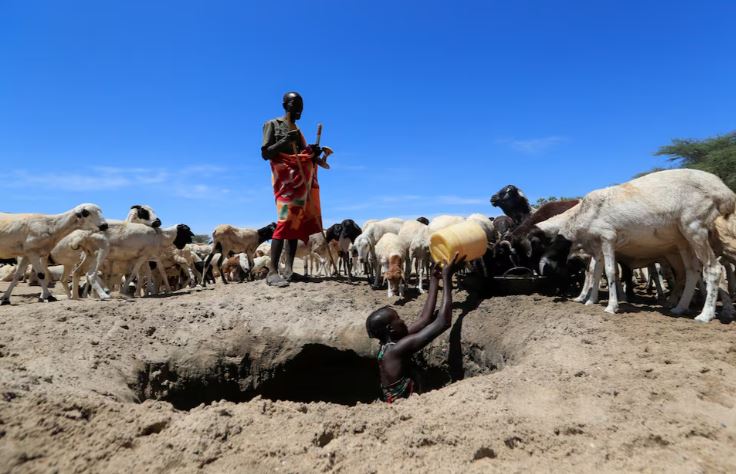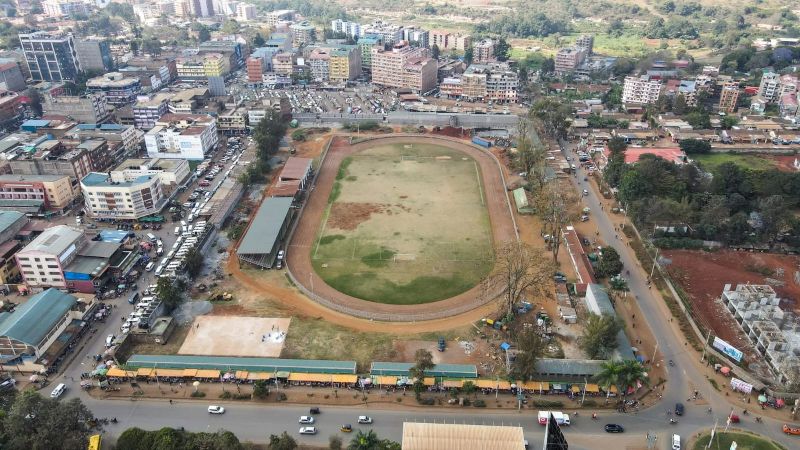Kenya faces food insecurity, weather strain amid La Niña impact

The report identifies 16 hunger hotspots worldwide, including Kenya, where climate-related events, conflict, and economic instability are pushing vulnerable communities to the brink of starvation.
Kenya is facing potential food insecurity as La Niña weather patterns and ongoing rainfall continue to disrupt agricultural activities and threaten vulnerable communities.
The La Niña phenomenon, which is forecasted to affect global climates through March 2025, has led to cooler-than-usual sea temperatures in the Pacific Ocean, often resulting in drier conditions in parts of Kenya, especially in the eastern and southeastern regions.
More To Read
- IGAD climate centre predicts below-average rains in Eastern and Northern Kenya
- East Africa on the edge as record droughts break climate and humanitarian systems
- 2024 sets new record as the hottest year, breaching the Paris Agreement threshold of 1.5°C
- EU scientists say 2024 will be the world's hottest year on record
- Brace for colder nights in next five days, weatherman tells Kenyans
- Horn of Africa at risk of severe drought, global agencies warn
This, in turn, could lead to drought, impacting agriculture, water supplies, and overall food security.
The Food and Agriculture Organisation (FAO) and the World Food Programme (WFP) recently issued a report, Hunger Hotspots – FAO-WFP Early Warnings on Acute Food Insecurity, warning that the La Niña conditions could worsen drought across Kenya, Somalia, and Ethiopia, placing millions at risk of hunger.
"Hunger hotspots"
The report, released last week, identifies 16 hunger hotspots worldwide, including Kenya, where climate-related events, conflict, and economic instability are pushing vulnerable communities to the brink of starvation.
The report classifies a total of 22 countries and territories as "hunger hotspots," with Sudan, Palestine, South Sudan, Haiti, and Mali listed as the highest-priority areas.
Kenya, Lesotho, Namibia, and Niger were newly added to the list due to worsening conditions, while countries like Ethiopia, Somalia, and Zimbabwe remain on the list.
The FAO and WFP have called for urgent humanitarian action to mitigate the impact of acute food insecurity, particularly in areas facing severe access constraints and conflict.
QU Dongyu, FAO's Director-General, emphasized the need for both immediate and long-term actions to prevent starvation and malnutrition, noting that peace is essential for food security.
"Without peace and stability, farmers cannot grow food, harvest, or sustain their livelihoods," he stated.
Cindy McCain, WFP's Executive Director, echoed these sentiments, urging world leaders to support diplomatic efforts and humanitarian work to address global hunger.
Meanwhile, the Kenya Meteorological Department forecasts continued rainfall across the country for the next seven days.
The latest weather update indicates that regions including the Central Highlands, Nairobi, Western Kenya, Lake Victoria Basin, Rift Valley, Coast, and North-eastern Kenya are likely to experience varying intensities of rain.
"Some areas might experience isolated heavy rainfall," stated the department.
Other Topics To Read
Night temperatures are expected to be cooler, dropping below 10 degrees Celsius in parts of the Central Highlands, Central Rift Valley, and southeastern areas, while daytime temperatures will remain warm, with the Coast and northern regions reaching up to 30°C.
This forecast follows several days of heavy rain in Nairobi and other areas.
In a previous forecast on November 5, the meteorological department advised Nairobi residents to prepare for light to moderate rainfall, with possible heavy showers.
While the first half of November was expected to be wet, the second half is likely to be mostly sunny and dry, though isolated storms may occur.
Top Stories Today














































